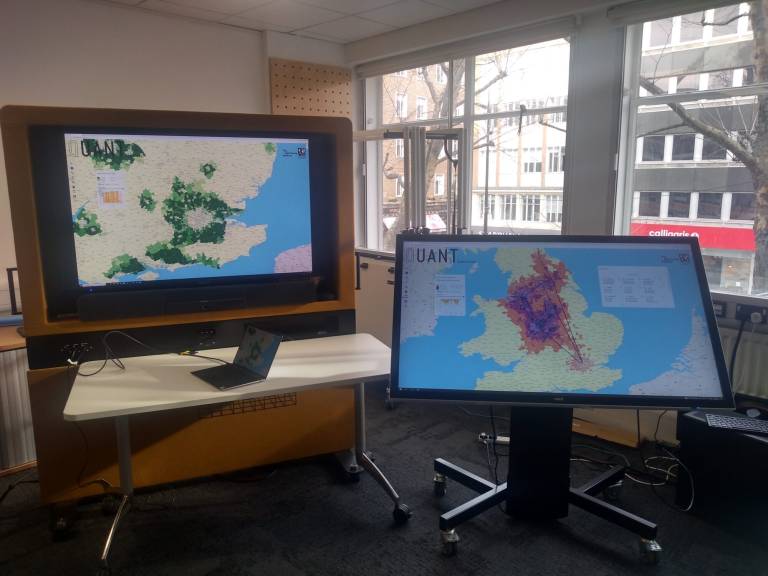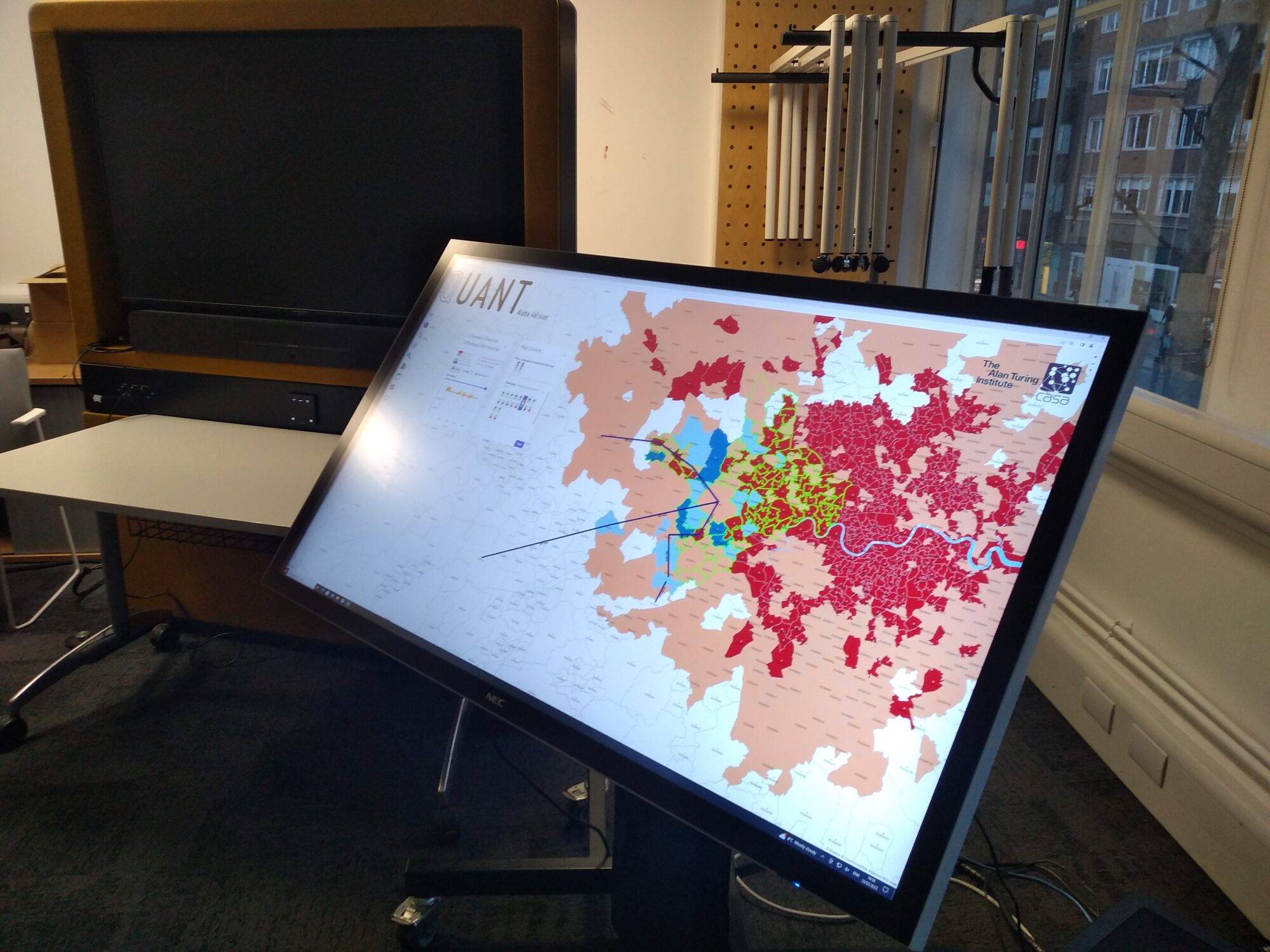The DAFNI Hardware Fund powers CASA research on the impacts of major infrastructure projects
27 June 2023
Leaders in the field of smart cities from The Bartlett Centre for Advanced Spatial Analysis are using high-end servers to power the QUANT model, looking at the likely effect of large infrastructure projects such as Heathrow's 3rd runway on employment and population.

The Bartlett Centre for Advanced Spatial Analysis (CASA) recently secured funding from the DAFNI Hardware Fund to purchase servers, high-performance computers, headsets, and GPU hardware to support research projects involving large amounts of data and complex model runs.
One such project is QUANT, which allows the public to explore the impact of transport and employment changes on residential locations in the UK. Typical QUANT scenarios involve predicting residential demand following the construction of a 3rd runway at Heathrow, or the effect on travel time of a project like High Speed 2 or Crossrail.
The new hardware purchased through the DAFNI Hardware Fund has allowed researchers at CASA to build their own twin of a DAFNI node using Docker and Kubernetes, which can be used to host QUANT publicly. The model has over 8,000 zones and uses three modes of transport, which requires approximately 214 million computations of origin, destination, and cost per run. The parallel GPU threads enable significant speedup in performance.

The new version of QUANT also allows for road and bus scenarios, which were not possible previously. The touch table, which is funded by the Alan Turing Institute, is used to visualise the outputs while the VR hardware allows for the visualisation of model outputs and opens up a new avenue of research that was previously impossible.
The new hardware has improved the interactivity of the website and reduced run times to seconds, allowing researchers to have an environment based on Docker and Kubernetes, which is close to the real DAFNI hardware at RAL and more flexible in terms of software development and debugging.
For further reading on the impact of the DAFNI Hardware Fund and the specific technologies used to execute the project, please view the DAFNI press release.
 Close
Close

